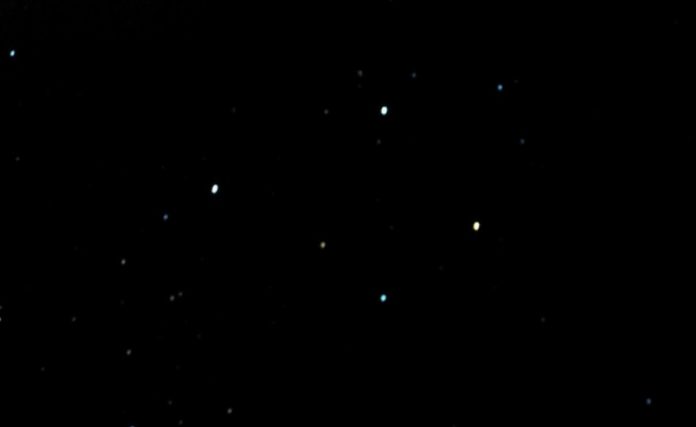The internal structure of Beta Crucis, a dazzling blue massive star depicted on the flags of Australia, Brazil, New Zealand, Papua New Guinea, and Samoa, has been unlocked for the first time by an international team of scientists from Australia, the United States, and Europe.
The researchers, led by Dr. Daniel Cotton, discovered the star to be 14.5 times as massive as the Sun and as young as 11 million years old, making it the heaviest star ever discovered using asteroseismology.
The results will shed new light on how stars live and die, as well as how they affect the chemical development of the Galaxy.
The research team used a combination of asteroseismology (the study of a star’s regular movements) and polarimetry (the measurement of the orientation of light waves) to figure out the star’s age and mass.
Asteroseismology is based on seismic waves bouncing around a star’s interior, causing quantifiable variations in its brightness. It’s proven difficult in the past to probe the interiors of hefty stars that will ultimately explode as supernovae.
“I wanted to investigate an old idea,” said Dr. Cotton, lead author from The Australian National University (ANU), and Monterey Institute for Research in Astronomy.
“It was predicted in 1979 that polarimetry had the potential to measure the interiors of massive stars, but it’s not been possible until now.”
Professor Jeremy Bailey of the University of New South Wales (UNSW), one of the study’s co-authors, said: “The size of the effect is quite small. We needed the world’s best precision of the polarimeter we designed and built at UNSW for the project to succeed.”
Beta Crucis, also known as Mimosa, was studied using three different types of light measurements: space-based light intensity measurements from NASA’s WIRE and TESS satellites, ground-based high-resolution spectroscopy from the European Southern Observatory, and ground-based polarimetry from Siding Spring Observatory and Western Sydney University’s Penrith Observatory.
“It was a lucky circumstance that we could use the world’s most precise astronomical polarimeter to make so many observations of Mimosa at the Anglo-Australian Telescope while TESS was also observing the star,” said Professor Derek Buzasi from Florida Gulf Coast University.
“Analysing the three types of long-term data together allowed us to identify Mimosa’s dominant mode geometries. This opened the road to weighing and age-dating the star using seismic methods.”
KU Leuven Professor Conny Aerts stated: “This polarimetric study of Mimosa opens a new avenue for asteroseismology of bright massive stars. While these stars are the most productive chemical factories of our galaxy, they are so far the least analysed asteroseismically, given the degree of difficulty of such studies. The heroic efforts by the Australian;polarimetrists are to be admired.”
Source: Nature Astronomy
Image Credit: ANU
You were reading: This bright blue giant star is 14.5 times heavier than our Sun
